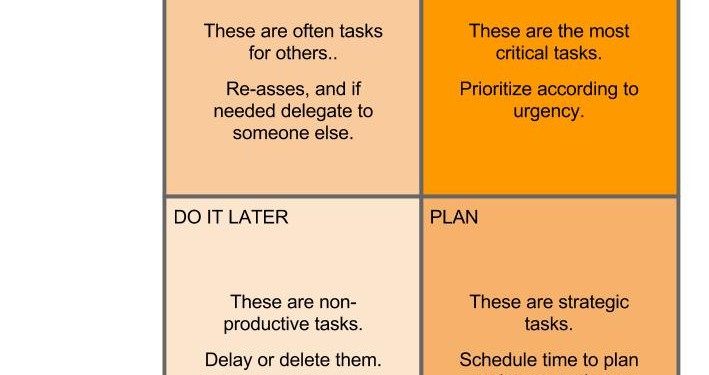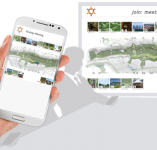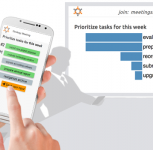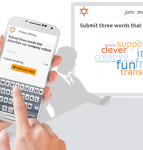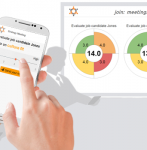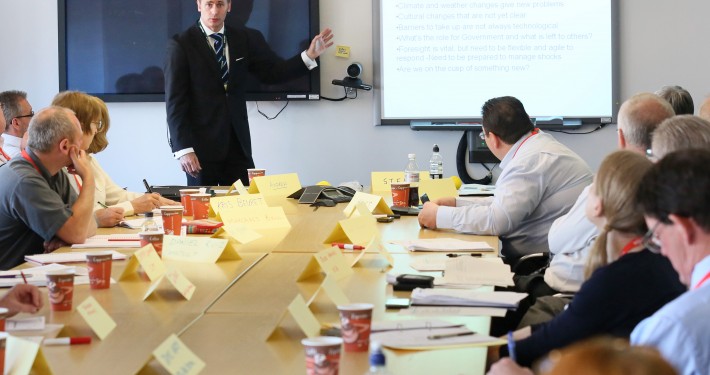Executive leadership is constantly challenged to find ways to make team building a scalable and effective tool to align team members with the goal of achieving a common vision.
The right team building activities can go a long way in assisting with that challenge by actually helping to get individuals to be more collaborative.
The wealthy industrialist, Andrew Carnegie, once said:
“Teamwork is the ability to work together toward a common vision. The ability to direct individual accomplishment toward organizational objectives. It is the fuel that allows common people to attain uncommon results.”
Dale Carnegie, who wrote How to Win Friends and Influence People, created a world-renowned training company that sees the power behind successful teams. Their vision includes the following:
“When everyone is aware of how everyone else works and where they excel they can utilize that information to not only get the job done, but also get it done well”.
Let’s explore philosophies behind team building and the impact of activities as they both promote the open and thoughtful communications and collaboration that are essential to the success of a company.
What is team building, and why should you do it?
In order to fully understand team building, a brief definition of what comprises a team is in order. A team is not simply a group of people. It is a body of individuals mutually-committed to a common purpose, its goals, and the success of all involved. A well-defined strategic plan—with purpose, objectives, values, and goals—binds people together, helping to transform them into a team.
Team building can fall into at least two major categories:
- to build and strengthen the interpersonal relationships that unite team members
- to align team members’ thinking and efforts toward the specific team goals
Examples of the latter would be when the marketing team meets to improve marketing skills, or when the executive leadership team needs to build up its strategies for winning.
The reasons for allocating time and resources to team building activities are many. Perhaps the team members lack connection, each feeling out of sync with the others. Is communications stifled? Does it feel as though the group is broken up into separate factions? If these situations exist, then it becomes difficult to collaborate and gain consensus—thoughtful, focused, team-driven consensus—on even the simplest goals. Given the importance of team cohesion it should come as no surprise that Master of Business Administration (MBA) programs throughout our universities put special emphasis on mastering team building.
Team strengths and weaknesses
Clemson University, in South Carolina, views the following four components as strengths in teams:
- Connection—the interconnectedness, the ongoing and open communications, between team members
- Innovation—dynamic thinking
- Dedication—maintaining forward progress and focus
- Skill set—a diverse range of skills coming together
Weaknesses include:
- Personality conflict—potentially significant if not attended to
- Lack of organization and focus—chaos, confusion, and nonalignment
Identifying these strengths and weaknesses will help focus the team building that needs to be done. If a team is in its inception phase, there may be little upfront knowledge of these strengths and weaknesses, yet the meeting leader can make inroads in advance with a little planning. The team’s strengths and weaknesses can be identified by evaluating these factors through past experience with the team members and the goals at hand, or by polling key members—or all members—as to how they see the current status of the team.
5 Proven predictors for team success
From the Harvard Business Review, “The New Science of Building Great Teams” by Alex “Sandy” Pentland, it was found that patterns of communications were the most important predictors of a team’s success. Five key characteristics were attributed to the overall effectiveness of highly-functioning teams:
- Talking and listening were given relatively equal weight by everyone
- Team members faced one another while communicating, and with energy
- All team members communicated with each other, not just with the team leader
- Team members had side conversations with one another (though not during a meeting)
- Members would explore, research, outside of the team, bringing information back to the team
The 4 stages of team building
There are four stages of team development, according to Bruce Tuckman, an American psychologist whose ideas appeared in an American Institute of CPAs article.
The development proceeds as follows:
- Forming: In this stage, people get to know one another, assume roles, and get oriented. Members may be timid, afraid to speak up, as trust and relationships have not yet been developed. There may be questions about the purpose and goals of the team.
- Storming: This is where members’ assertiveness may surface, where differences of opinions, roles, and competition among factions will likely enter in as members become more comfortable in expressing their views.
- Norming: Team cohesiveness begins to build as people have already expressed their initial views—which often helps to defuse disagreements as the energy behind them has been somewhat released—and trust begins to build. Members begin to more fully settle into the task at hand of moving forward and finding consensus. One caution exists where comfortable team members might agree too readily, running the risk of arriving at a faulty solution due to an ease in conforming.
- Performing: In this stage, trust, commitment, and forward movement have improved to a point where the team is performing in a viable fashion. Continued improvement will follow as need be.
Note that a fifth stage—Adjourning—was added later, but it is more related to the undevelopment, or termination, of the team.
Team building for virtual teams
It may be that your team is spread out across the globe, including remote offices and telecommuters working from a cafe´. Michael Watkins, in a Harvard Business Review article on making virtual teams work, offered the following suggestions: Get the team together early-on for a face-to-face meeting so they get to know one another. Team members can then associate email addresses, and teleconference voices, with faces and stories.
If the team exists long-term, hold at minimum one annual face-to-face meeting. Also, having regular virtual meetings (perhaps weekly—same day and time) embeds a feeling of connectedness through increased interaction that builds and strengthens the underlying meaning of “team.” During each of these meetings, have team members give a summary of their work to-date. Again, having the team members gain a sense of one another goes a long way toward team building. Keep in mind that this collaboration is easily facilitated through MeetingSift’s use of technology where everyone can see the group working together as meeting tasks are accomplished, real-time during the meeting, on their smartphones, tablets, and computers.
Team building activities for meetings
Getting team members to know one another provides the cohesiveness that is needed for a team to be engaging and trusting. Those team members who enjoy the same outdoors activities, for example, will bond over them. Perhaps three of the team sail; four enjoy cooking; two have children who play soccer. Of course, this benefit occurs only when team members become aware of these shared interests. This is where team building activities come into play.
These activities can be short—often less than ten or fifteen minutes—but a U.S. News/Money article states that in-depth team building can last from an hour or two to several days. Keep in mind that the purpose of these activities, ultimately, is to improve the team members’ ability to work together to achieve team goals in the most effective and efficient manner. Ensure that the activity fits the capabilities of all participants so no one is embarrassed or otherwise uncomfortable. One additional caution: If the team is headed out for an afternoon of paintball, for example, don’t get too caught up in overtly blasting your boss, or a co-worker. This applies as well if you were the college volleyball spiking pro. Whatever the activity, keep the competition light.
Icebreakers & energizers
The focus of the activities below is to generate camaraderie by getting each person to know something on a personal level about the others. Friendships form this way. It’s the beginning of community—a team is a community.
Team Building Activity #1: Whiteboard lists of common interests
Have the meeting leader create columns of interests (e.g., runners, surfers, sailors, musicians, singers, educators, writers, and so-on) on a whiteboard. Then have everyone sign up under categories they subscribe to. If the group isn’t too large, have everyone come up to the board together. The mingling, as each person puts their name in various columns, generates conversation. Afterward, have the group form a circle where each individual says their name and which interests they signed under. Keep in mind that this also works for teams that have been working together but never shared personal info.
Team Building Activity #2: Two truths and a lie
This is popular, fun, and it also lets team members get to know the personalities of one another a bit better. In a circle, go from one person to the next, with each giving three “facts” about themselves, but one is a lie. Make the truths not quite so obviously true. Then the group votes on which is the lie. This can also help us to back off on judgments by being surprised by what someone has accomplished or done. Who would have thought, for example, that the CEO practices meditation, or the quiet librarian is a skydiver.
This activity is a perfect example of how everyone can use their smartphone, tablet, or laptop to electronically vote on each person’s truths and lies. With MeetingSift you can easily engage teams of all sizes, while the group results are visualized in real-time, and can be displayed immediately for everyone to see and discuss.
Team Building Activity #3: Name and…
The entire team is given a question to answer. It might be, “What should be the maximum number of members on a team?” Each person—in a circle, one at a time—gives their name followed by their answer. The next person gives their name and answer, then repeats the names and answers from the previous participants. It’s a fun exercise that encourages actively paying attention, especially to the names of the other participants.
Team Building Activity #4: Who Done It?
This activity, from the University of Notre Dame, is another icebreaker where people get to know more about their teammates. Have each person write down, on a note-card, something of interest they have done. Think of something not easily guessed by the other players. Put all of the cards in a pile, shuffle them, then distribute one each to everyone. One at a time, each person will read the item of interest they are holding, then guess who it belongs to. If the guess is incorrect, successive guesses by others can continue until the person who did the item of interest is found. When the person is found, the owner can briefly explain what it was about.
A relevant Ted Talk: Build a Tower, Build a Team
Spend the seven minutes. It’s well worth it!
http://www.ted.com/talks/tom_wujec_build_a_tower?language=en
Go team!
TOOLS FOR TEAM BUILDING ACTIVITIES
With MeetingSift you can easily engage teams of all sizes via the participants’ smartphones, tablets, or laptops. The group results are visualized in real-time, and can be displayed immediately for everyone to see and discuss.
The Six Most Common Types of Meetings

MeetingSift's easy to use collaboration platform for meetings helps you run more productive meetings, with higher engagement, better decision making, and more consistent follow up.

